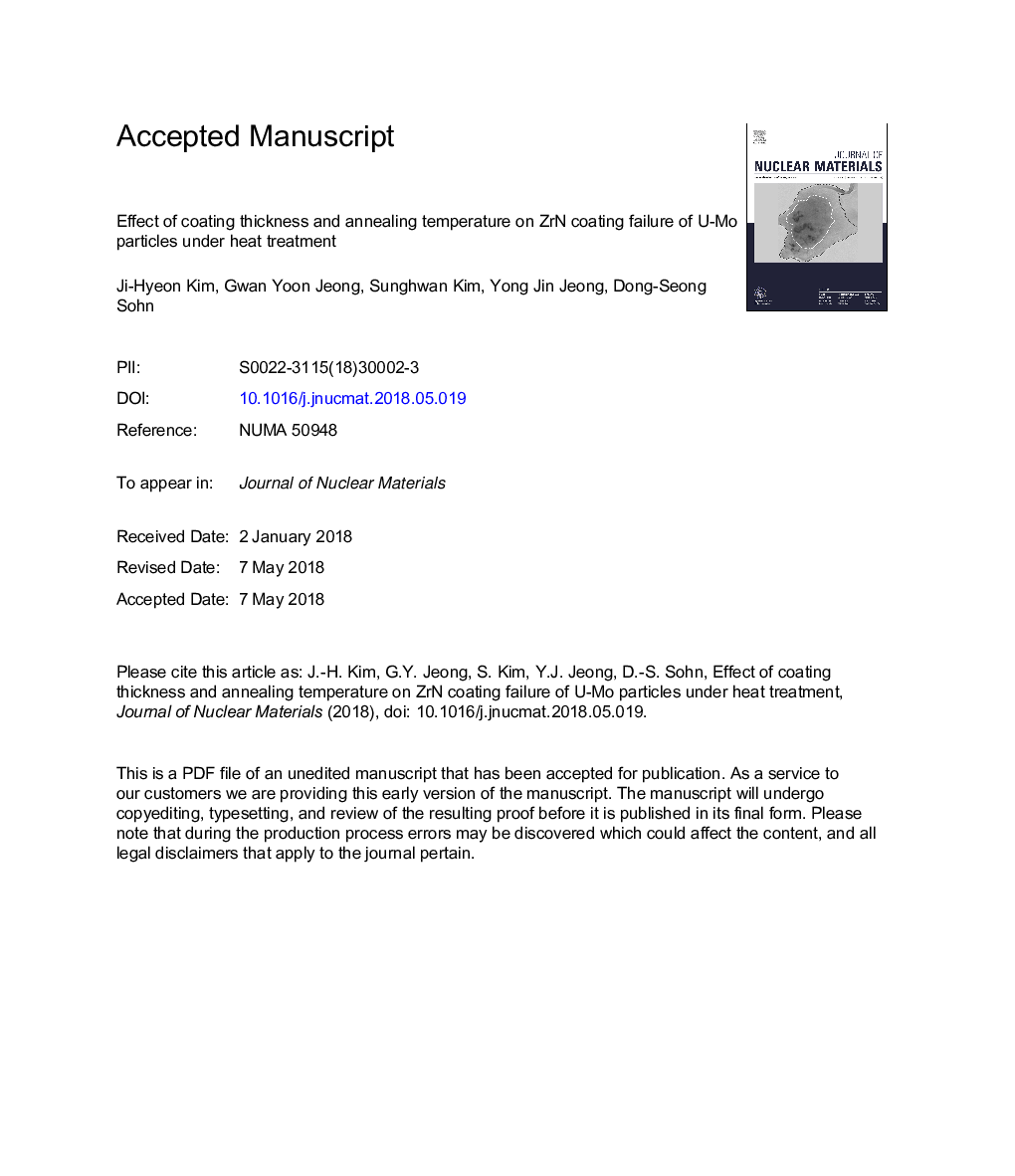| Article ID | Journal | Published Year | Pages | File Type |
|---|---|---|---|---|
| 7963152 | Journal of Nuclear Materials | 2018 | 52 Pages |
Abstract
Zirconium nitride (ZrN) coating is used as a diffusion barrier layer on U-Mo powder surfaces to suppress interdiffusion layer formation. However, it has been reported that the structural integrity of the coating did not remain intact after fuel plate fabrication process. To assess the coating integrity during the fabrication process at high temperature, parametric studies were performed with different coating layer thicknesses and annealing temperatures for ZrN-coated U-7w.t.%Mo particles. The microstructure of the annealed samples was analyzed by using scanning emission microscopy (SEM) and X-ray diffraction. Finite element simulations were performed whether mechanical failure of the coating layer occurs under given annealing temperatures. The simulation results showed the effect of coating layer thickness and annealing temperature on the coating fracture. It was found that tensile hoop stress became larger to cause fracturing over the coating layers as the annealing temperature increased, which was consistent with the results of SEM analysis. By comparing experimental results with simulation results, the thresholds of coating layer thickness and annealing temperature for crack initiation was primarily determined by the U-7Mo particle size.
Related Topics
Physical Sciences and Engineering
Energy
Nuclear Energy and Engineering
Authors
Ji-Hyeon Kim, Gwan Yoon Jeong, Sunghwan Kim, Yong Jin Jeong, Dong-Seong Sohn,
